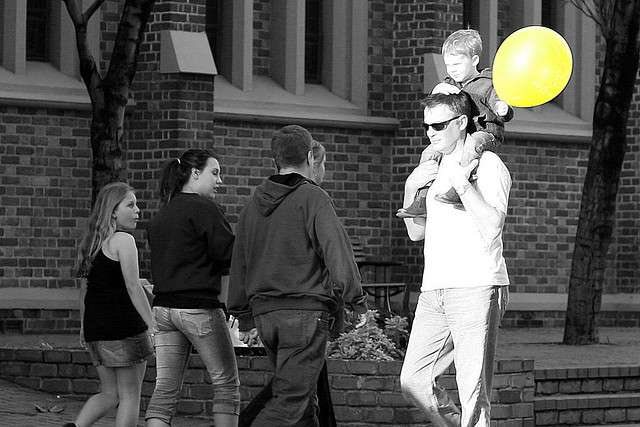Walkable neighbourhoods ease stranger danger fears

Creating pedestrian-friendly neighbourhoods with trees, footpaths, parks, shops and cafes could be the key to allaying parents' age-old fears about stranger danger, according to a Perth study.
The research considered how neighbourhood characteristics related to parents' fear of strangers and their perception of how likely it was that their child would be approached, taken or harmed by a stranger.
It found living in a neighbourhood that encouraged pedestrians helped to ease parents' fears while more vehicle traffic had the opposite effect, increasing parents' concerns that their child could be harmed.
The research used a survey of more than 1000 Perth parents with children in Years 5, 6 and 7 at state government schools.
UWA social scientist Sarah Foster, who led the research, says the natural surveillance generated by a more walkable neighbourhood helps to alleviate fears, with parents perceiving the extra eyes on the street as a comfort rather than a threat.
She says an ideal neighbourhood would include footpaths, street trees with high canopies and destinations such as parks, local shops and cafes where people can bump into their neighbours.
"You want to have that good connection between house and street, so you don't want houses with high fences and walls out the front that prevent those residents from monitoring the street," she says.
People power adds to neighbourhood comfort
"You want places that people can gather, whether that's because they're walking in the street…and you're comforted by the presence of people.
"Or whether it's because…they can interact with their neighbours, and the social interactions and social capital generated makes people feel safer."
Dr Foster says parents need to make the decision for themselves about when they feel comfortable giving their child more independence, and ideally this should happen gradually.
But she says if kids are kept in the home and not given freedom to move it could impact on their confidence, wayfinding and spatial skills.
"Every parent will have to make a decision for their child about the certain age that they think is appropriate for their kid to be out and have a bit more independence," Dr Foster says.
"But we know from the evidence that if they're out and they're independently mobile that's good for their physical activity levels, we know it's also good for their confidence and cognitive function, and social and spatial awareness as well."
More information: "Suspicious minds: Can features of the local neighbourhood ease parents' fears about stranger danger?", Journal of Environmental Psychology, Volume 42, June 2015, Pages 48-56, ISSN 0272-4944, dx.doi.org/10.1016/j.jenvp.2015.02.001
Provided by Science Network WA




















